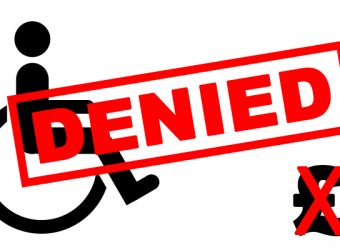
How to get employers to take headaches seriously
Headaches can make it harder to do your job - here's how to speak to your manager about reasonable adjustments
We know many of our clients struggle with ensuring their employer understands their headaches and the impacts they may have. Here, The Brain Charity’s Employment Law and Welfare Officer Aneeta Bibi shares her views.
What are headaches?
There are many types of headache, split into primary headaches and secondary headaches.
Primary headaches are when the headache itself is the main problem. It is not a symptom of an underlying disease or condition. The pain from primary headaches can be disabling in most cases.
There are several categories of primary headaches. Some of the most common types of primary headache include:
Tension headache
- Tension headaches are the most common type of headache. They are what we think of as normal, ‘everyday’ headaches. They feel like a constant ache that affects both sides of the head, as though a tight band is stretched around it.
- Normally, tension headaches are not severe enough to prevent you doing everyday activities. They usually last for 30 minutes to several hours but can last for several days.
Migraines
- Migraines are less common than tension headaches. They are usually felt as a severe, throbbing pain at the front or side of the head. Some people also have other symptoms, such as nausea, vomiting and/or increased sensitivity to light or sound.
- Migraine may be considered as a disability under the Equality Act in some cases. This will depend on the severity and frequency of the attacks and the impact the condition has on the person’s ability to carry out normal day-to-day activities
An estimated 23.3% of adults aged 15-69 experience migraine.

Cluster headaches
- Cluster headaches are a rare type of headache. These are excruciatingly painful. They cause intense pain around one eye, and often occur with other symptoms, such as a watering or red eye and/or blocked or runny nose.
- Cluster headache is a recognised disability.
Secondary headaches
- A secondary headache is caused by another condition that triggers pain-sensitive areas in the neck and head. Secondary headaches are rare, but they can also be much more serious than primary headaches.
- Secondary headaches can be a warning sign of a more serious underlying condition, including brain tumours, aneurysm, meningitis, a bacterial or viral infection causing inflammation of the brain or neck or brain injury.
Common triggers
Common triggers for headaches can include:
- Not enough sleep or changing sleep patterns
- Being dehydrated
- Artificial light and glare e.g. screens
- Loud noise
- Additives, caffeine and alcohol
- Stress and anxiety
- Lack of exercise
This is not the same for everyone, neither is this an exhaustive list. Different primary or secondary headaches may have triggers of their own.
Dealing with headaches in the workplace

The headaches listed above can cause mild to severe difficulties impacting your ability to work. Different people experience disabilities in different ways, so it is important to remember the lived experience of a disability or health condition must be analysed on a case-by-case basis. However, the most common difficulties caused by headaches include:
- Severe, throbbing head pain
- Disturbed vision, sensitivity to light, sound, and smells
- Feeling nauseous and vomiting
- Difficulty focusing
- Irritability or fatigue
- Difficulties with posture/sitting for a prolonged period
The Equality Act 2010
Under the Equality Act 2010, you are disabled if you have a physical or mental impairment that has a ‘substantial’ and ‘long-term’ negative effect on your ability to do normal daily activities.
Headaches and reasonable adjustments
Under the Equality Act, there is also a legal duty for employers to make reasonable adjustments for disabled employees.
The law recognises that solutions may vary according to individual circumstances. Reasonable adjustments must be effective, practical, and significant.
Keep a headache diary, so you can work out what your triggers may be. Supportive measures should be personalised to the individual, but some of the common supportive measures you can ask your employer for include:
- Access to a quiet room when needed
- Flexible working hours and location
- Regular microbreaks for medication or food/drinks
- Occupational Health referrals for further expert guidance for both the employer and the employee
- Time off for medical appointments
- A well-ventilated environment
- Regular wellbeing meetings to monitor progress or update support
- Disregarding all or some disability-related absences from the organisation’s sickness/absence policy
- The keeping of a formal health passport to track reasonable adjustments and to avoid any difficulties if management is changed
Speaking to your manager about your headaches

If you experience headaches, your manager should enable you to feel comfortable enough to discuss your condition and should help you gain the support you need.
Managers should take a sensitive and proactive approach to identifying the needs of individuals in the workplace, as an open and empowering management style is likely to increase employee engagement and reduce stress.
If you are a manager of someone with headaches, encourage a shared responsibility for creating a work environment that enables everyone to perform at their best.
One of the best things you can do is listen, so be available to have a confidential discussion about how they are impacted and how you can support them to manage their condition.
If you need help from The Brain Charity’s team to manage your headaches or discuss reasonable adjustments with your employer, email info@thebraincharity.org.uk or call 0151 298 2999.
Categories: Advice, Employment, Guest blogs
Published: 4 March 2023














